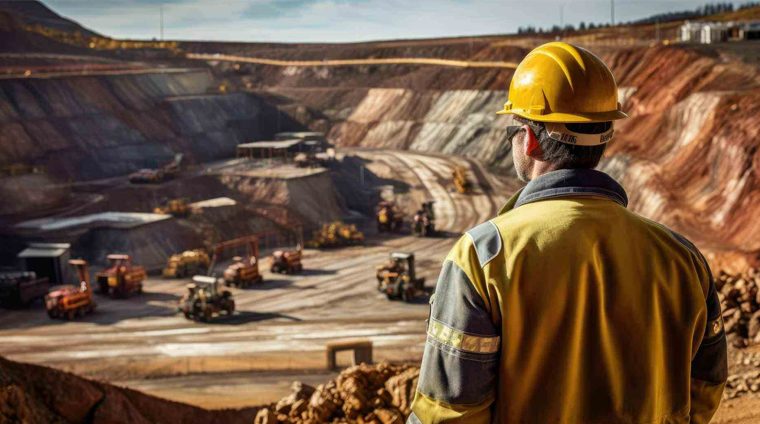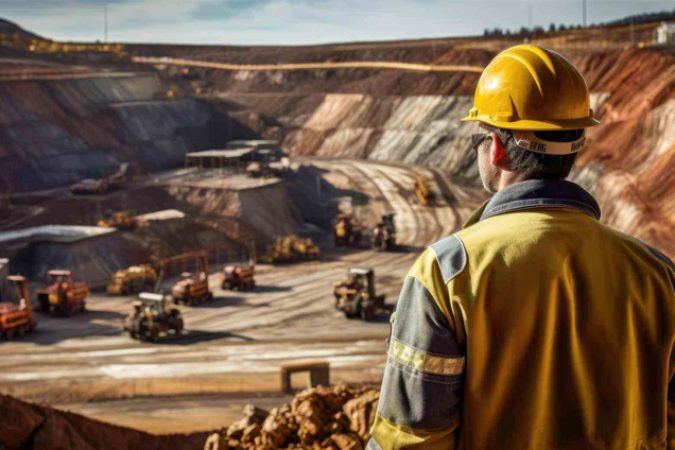GMGIS-GIS Applications in Geology and Mineral Exploration 02
Mar/2025
English
A course by
Description
Introduction
This intermediate-level course builds upon fundamental GIS knowledge, focusing on advanced spatial analysis, data integration, and geostatistical applications. Participants will gain practical insights into ore deposit mapping, geophysical data processing, and GIS-driven mineral exploration models.
Date
Day | Time | Price | Country |
|---|---|---|---|
Mon – Wed | 8:00 – 10:00 | $5/hrs | Turkey |
Tue – Thu | 18:00 – 19:00 | $5/hrs | Turkey |
Wed – Fri | 20:00 – 21:00 | $5/hrs | Turkey |
Sat – Sun | 18:00 – 19:00 20:00 – 21:00 | $8/hrs | Turkey |
This Training Course Will Highlight
- Advanced spatial analysis techniques for mineral exploration.
- Geostatistical interpolation and predictive mapping in GIS.
- Integration of multi-source data for mineral prospecting.
- Remote sensing and AI-driven exploration models in GIS.
Objectives
- Understand the basic principles of GIS and its applications in geology.
- Learn how to create geological maps and manage spatial data.
- Gain an understanding of spatial analysis techniques for mineral exploration.
- Develop skills in handling and visualizing geochemical and geophysical datasets.
- Learn how to use GIS software for mineral prospectivity analysis.
Training Methodology
- Instructor-led presentations on GIS fundamentals.
- Hands-on exercises using GIS software (e.g., ArcGIS, QGIS).
- Basic geological and mineral mapping exercises.
- Step-by-step demonstrations of spatial data processing.
- Interactive Q&A sessions on GIS applications in exploration.
- Case Study: GIS-based geological mapping for phosphate or gold exploration.
Organizational Impact
- Enhances geological and exploration data management through GIS.
- Improves targeting efficiency and decision-making in mineral exploration.
- Strengthens technical capabilities in spatial data interpretation.
- Supports better integration of geospatial data with geological datasets.
- Reduces exploration risks by optimizing data analysis and visualization.
Personal Impact
- Develops fundamental GIS skills applicable to geology and mineral exploration.
- Improves spatial analysis and map creation capabilities.
- Strengthens ability to interpret geological and geophysical data using GIS.
- Expands career opportunities in mining and mineral exploration companies.
- Builds confidence in working with GIS tools for mineral prospectivity mapping.
Who Should Attend?
- Entry-level geologists and exploration geoscientists.
- GIS specialists working in mineral exploration and mining.
- Mining engineers involved in spatial analysis and planning.
- Government and regulatory personnel in geological survey departments.
- Undergraduate geology, mining, and GIS students.
- Environmental geologists interested in GIS applications for mining projects.
- Technical staff involved in geological data management.
- Exploration decision-making using GIS-based targeting models.
Course Outline
Day 1
Advanced Spatial Data Processing in GIS- Advanced GIS techniques for mineral exploration mapping.
- Geospatial data transformation and coordinate system management.
- Digitizing and vectorizing historical geological data.
- Data management and database development in GIS.
- Combining field survey and satellite data for geological analysis.
- GIS-based geological mapping of a gold deposit.
Day 2
Geostatistics and GIS for Mineral Exploration- Understanding geostatistical analysis in GIS.
- Point pattern analysis for geological anomalies.
- Interpolation methods – Kriging, IDW, and natural neighbor techniques.
- Modeling geochemical data distributions in GIS.
- Predictive modeling of mineralized zones using spatial statistics.
- Kriging-based mineral prospectivity mapping.
Day 3
Geophysical Data Integration in GIS for Mineral Exploration- Importing and processing airborne and ground geophysical data into GIS.
- Overlaying geophysical layers with geological and geochemical datasets.
- Magnetic anomaly interpretation and GIS-based geophysical modeling.
- Gravity and radiometric data visualization for mineral targeting.
- Identifying geological structures using GIS-based geophysical analysis.
- GIS interpretation of geophysical anomalies in a bauxite exploration project.
Day 4
Remote Sensing and Machine Learning Applications in GIS- Advanced remote sensing techniques for mineral exploration in GIS.
- Processing multispectral and hyperspectral satellite images.
- Image classification and spectral anomaly detection in GIS.
- Machine learning techniques for GIS-based mineral prospectivity mapping.
- Integrating remote sensing outputs with field geological data.
- Remote sensing and GIS integration for phosphate exploration.
Day 5
GIS-Based Mineral Prospectivity Mapping and Decision-Making- Developing mineral prospectivity models in GIS.
- Weight of Evidence (WoE) and Fuzzy Logic models in mineral targeting.
- Multi-criteria decision-making (MCDM) in GIS for exploration projects.
- Defining high-priority exploration zones using GIS techniques.
Cancellation policy
no refund is accepted
Certificate


Free
Skill level Intermediate
100% positive reviews
Language: English
Assessments: Self
Step Into a World of Knowledge and Growth
Imagine a place where learning is not just about theory
Courses you might be interested in
Introduction This advanced training program is designed for senior geologists, GIS specialists, and exploration managers who require expertise in high-level GIS applications, predictive mineral exploration models, geospatial machine learning, and...
-
0 Lessons
Free
Introduction This beginner-level course introduces Geographic Information Systems (GIS) applications in geology and mineral exploration. Participants will gain an understanding of spatial data visualization, geological mapping, and mineral targeting using...
-
0 Lessons
Free
Free

